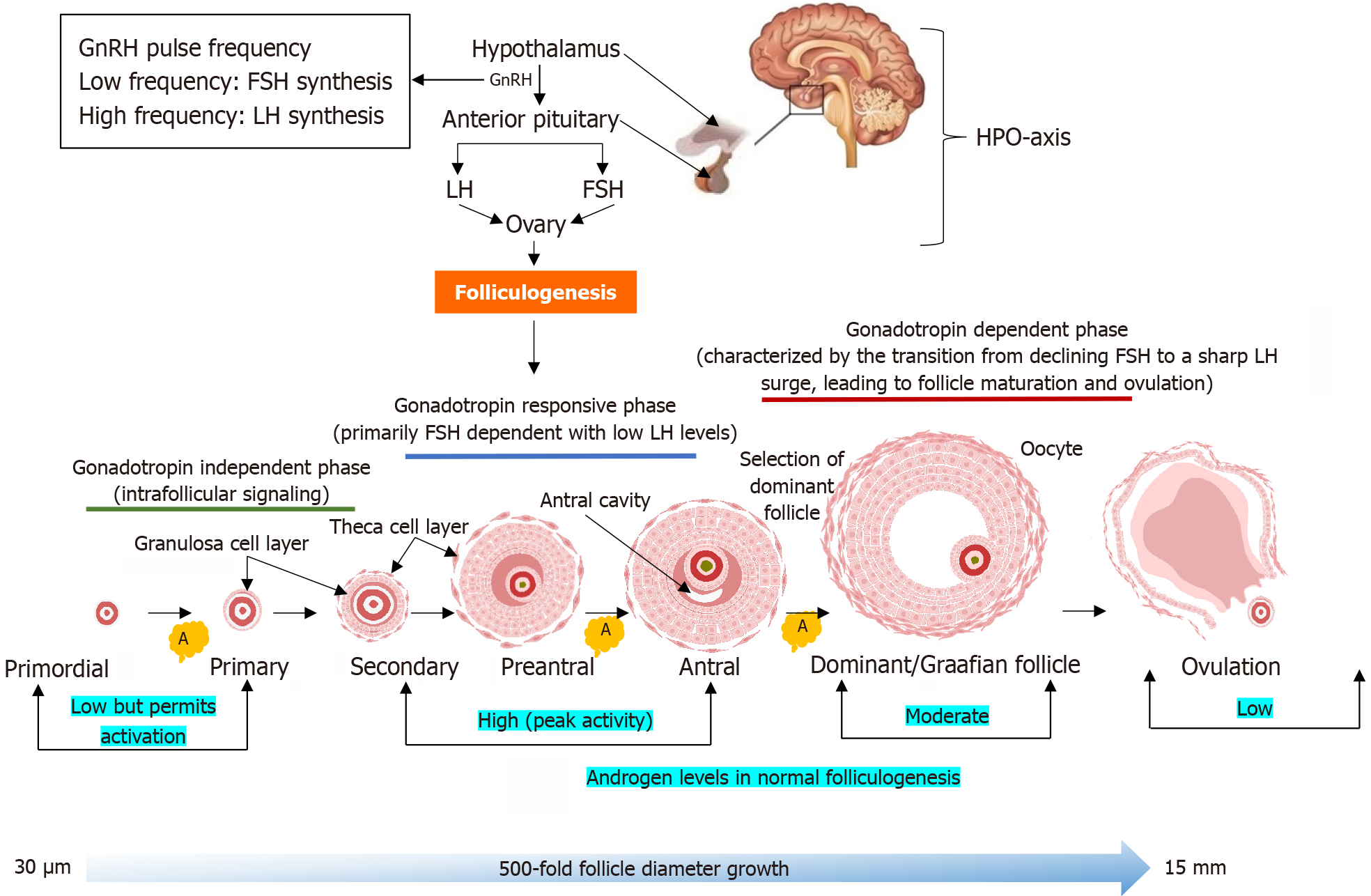Copyright
©The Author(s) 2025.
World J Diabetes. Jul 15, 2025; 16(7): 108789
Published online Jul 15, 2025. doi: 10.4239/wjd.v16.i7.108789
Published online Jul 15, 2025. doi: 10.4239/wjd.v16.i7.108789
Figure 3 Different stages of normal folliculogenesis from the primordial follicle to the dominant (Graafian) follicle and ovulation.
Gonadotropin-releasing hormone pulsatility controls the production of luteinizing hormone (LH) and follicle-stimulating hormone (FSH) from the anterior pituitary gland. Rapid gonadotropin-releasing hormone pulse frequency favors LH secretion, while slower pulses enhance FSH secretion. A balanced LH/FSH ratio is critical for coordinated follicular development, i.e., FSH promotes granulosa cell proliferation, estradiol synthesis, and follicle maturation, while LH stimulates theca cells to produce androgens, which serve as substrates for aromatization. Androgens begin to exert effects from the primordial stage by supporting the initial activation of dormant primordial follicles. Androgens exert their most prominent effects during the preantral and early antral stages, enhancing granulosa cell proliferation, FSH receptor expression and aromatase activity for estrogen biosynthesis. In the antral and dominant (Graafian) stages, androgens support follicle maturation and upregulate LH receptor expression. While androgens do not directly mediate ovulation, their prior actions facilitate the follicle’s response to the LH surge. Follicular atresia, which eliminates non-dominant follicles, is indirectly influenced by androgen. HPO: Hypothalamic-pituitary-ovarian; GnRH: Gonadotropin-releasing hormone; LH: Luteinizing hormone; FSH: Follicle-stimulating hormone; A: Atresia.
- Citation: Rambaran N, Islam MS. Decoding androgen excess in polycystic ovary syndrome: Roles of insulin resistance and other key intraovarian and systemic factors. World J Diabetes 2025; 16(7): 108789
- URL: https://www.wjgnet.com/1948-9358/full/v16/i7/108789.htm
- DOI: https://dx.doi.org/10.4239/wjd.v16.i7.108789









